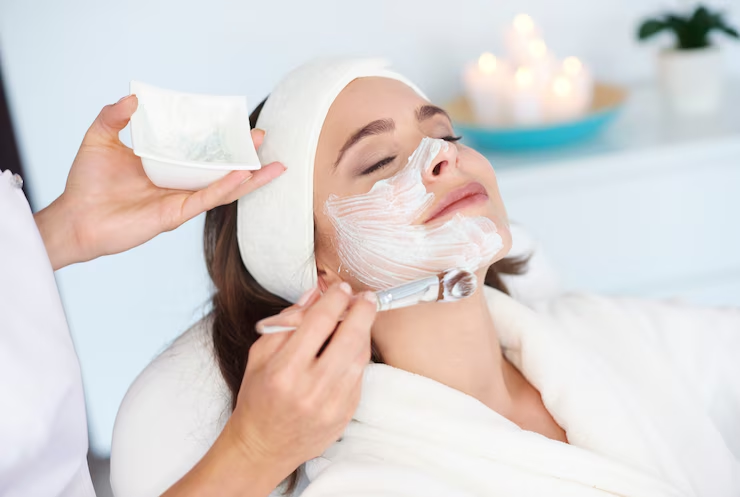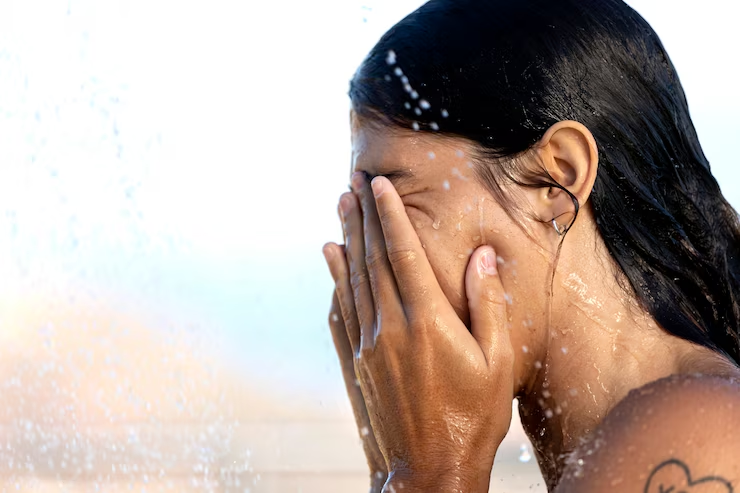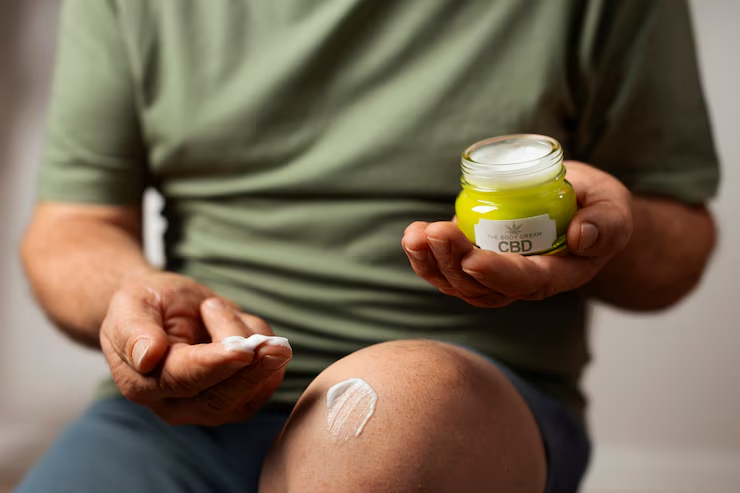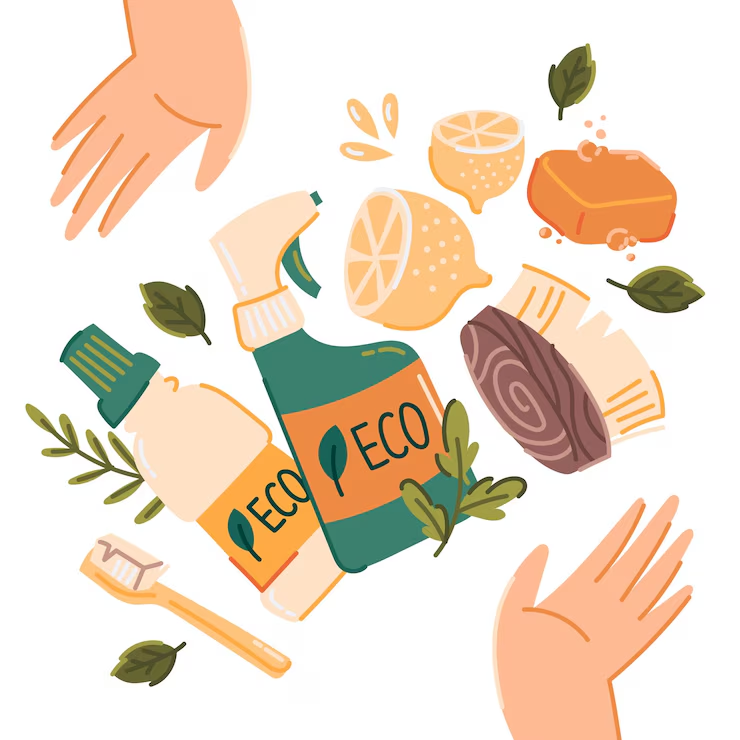Chemical burns from skincare products are more common than you might think. They often occur when individuals use high-strength acids, retinoids, or exfoliants without understanding their potency or how they interact with other products. The skin on the face is delicate and highly sensitive, making it more prone to adverse reactions when these ingredients are misused or overused.
If you’re wondering how to treat chemical burn on face from skincare, the first step is to stop using all active products immediately. Rinse your face gently with cool water and avoid scrubbing or applying harsh cleansers. Follow up with a soothing, fragrance-free moisturizer to help restore the skin’s barrier. Avoid sun exposure as much as possible, and never pick at the peeling skin.
For moderate to severe burns, consult a dermatologist as soon as possible. Proper treatment and care are essential to minimize long-term damage and support complete healing of the skin.
In this article, we will discuss everything you need to know about chemical burns caused by skincare products, including what they are, why they happen, when they occur, and how to treat them effectively. Additionally, we will offer the top 8 tips for treating a chemical burn on your face, outlining the benefits and ingredients involved in each step.

What is a Chemical Burn from Skincare ?
A chemical burn from skincare occurs when harsh or reactive ingredients in products damage the skin’s surface or deeper layers. Common culprits include alpha hydroxy acids (AHAs), beta hydroxy acids (BHAs), retinoids, and strong peels. These burns are not typical irritations—they result in pain, redness, inflammation, peeling, or even blistering, especially if the product is left on too long or combined improperly with other actives.
The most sensitive areas of the face—around the eyes, lips, and cheeks—are often most affected. People with compromised skin barriers, sensitive skin, or pre-existing conditions like eczema are at a higher risk. Identifying a chemical burn early is crucial to prevent worsening symptoms or lasting damage.
If you’re researching how to treat chemical burn on face from skincare, know that immediate action is vital. Stop all active products, soothe the skin with cool water and gentle moisturizers, and seek professional help for moderate to severe reactions.
A chemical burn occurs when a chemical substance damages the skin. When it comes to skincare, these burns typically result from strong exfoliants, acids, or harsh ingredients in cosmetic products that can irritate or even burn the skin. Common skincare ingredients that can cause chemical burns include:
Alpha Hydroxy Acids (AHAs)
Beta Hydroxy Acids (BHAs)
Retinoids (Retinol, Retinoic Acid)
Vitamin C (Ascorbic Acid)
Peroxide-based treatments
Bleaching agents
These chemicals are often present in products designed to exfoliate, brighten, or improve skin texture. While they can be beneficial when used correctly, an incorrect application, misuse, or overuse can cause skin irritation, redness, and in extreme cases, chemical burns.
Why Do Chemical Burns Occur ?
Chemical burns from skincare products occur when harsh ingredients disrupt the skin’s natural barrier, leading to inflammation and injury. Common causes include overuse of exfoliants like glycolic acid, salicylic acid, or retinoids, or using multiple active ingredients at once without allowing your skin time to adjust. Sometimes, not following product directions or using treatments meant for professionals at home can also trigger burns.
Your skin’s sensitivity plays a major role. If you have dry, sensitive, or compromised skin, you’re more vulnerable to chemical burns. Mixing incompatible products—like Vitamin C and retinol, or AHAs with BHAs—can cause the skin to react aggressively. Sun exposure after applying certain ingredients can also intensify the damage.
Understanding how to treat chemical burn on face from skincare starts with prevention. But if a burn occurs, immediately stop using all actives, rinse the area with cool water, apply a soothing, fragrance-free moisturizer, and consult a dermatologist if needed.
Chemical burns from skincare products happen due to several factors:
Overuse: Using products too frequently or in high concentrations can overwhelm the skin, leading to chemical burns.
Sensitive Skin: People with sensitive skin are more prone to chemical burns as their skin reacts more easily to skincare products.
Improper Application: Applying products unevenly or leaving them on the skin for too long can cause a negative reaction.
Incorrect Mixing of Products: Some skincare ingredients do not work well together and can cause irritation when used in combination.
Use of Strong Concentrations: Products with high concentrations of active ingredients, like acids, can be harsh on the skin if not used cautiously.
When Do Chemical Burns Occur ?
A chemical burn typically occurs shortly after using a product that contains an irritating or harmful substance. Symptoms can appear within minutes to hours after application, and the severity of the burn will depend on several factors, such as:
Skin Sensitivity: If you have sensitive skin, you are more likely to experience a chemical burn.
Concentration of the Chemical: Stronger formulations or acids increase the risk of burns.
Duration of Contact: The longer the chemical sits on the skin, the more damage it can do.
How to Recognize a Chemical Burn from Skincare
A chemical burn may not always appear immediately, but there are common signs and symptoms to watch for:
Redness: Skin will appear inflamed and flushed.
Swelling: The affected area may become puffy or swollen.
Pain or Stinging: A burning or tingling sensation is often felt during or after product application.
Peeling or Flaking: Skin may start to peel or flake off as the burn heals.
Blisters: In severe cases, blisters may form on the affected area.
Dryness and Tightness: The skin may feel tight and dry.
Top Tips for Treating a Chemical Burn on Your Face
If you have experienced a chemical burn from a skincare product, it’s essential to take action right away. Here are the top 8 tips to treat chemical burns effectively and help your skin heal:
Rinse Immediately with Cool Water

Rinsing your face immediately with cool (not cold) water is the first and most critical step in how to treat chemical burn on face from skincare. This helps remove any residual product and halts further chemical interaction with your skin. Avoid using hot water, as it can exacerbate irritation and make the burn worse.
Flush the affected area for at least 10 to 15 minutes, ensuring the water runs gently over the skin without harsh rubbing. This can help soothe the stinging sensation and minimize inflammation. If the product was acidic or highly active, rinsing helps dilute its potency and protect deeper skin layers from damage.
Once rinsed, pat your face dry with a clean, soft towel—do not rub. Follow with a calming product like aloe vera gel or a barrier-repairing moisturizer. This step is foundational in understanding how to treat chemical burn on face from skincare and sets the stage for proper healing.
Why: The first step in treating a chemical burn is to remove the irritant from your skin. Rinsing the face with cool water helps flush away the chemical and cools down the burn, reducing the heat and irritation.
How: Use lukewarm or cool water (not cold) to gently splash your face for 10-15 minutes. Avoid scrubbing or using soap as this can further irritate the skin.
Benefit: This simple act immediately calms the skin and minimizes further damage.
Apply Aloe Vera Gel
Applying aloe vera gel is a soothing and effective remedy when considering how to treat chemical burn on face from skincare. Aloe vera has natural anti-inflammatory and cooling properties that help reduce redness, swelling, and discomfort associated with mild to moderate chemical burns.
Once the affected area has been thoroughly rinsed with cool water and patted dry, apply a generous layer of pure aloe vera gel. Make sure the gel is free from added fragrances, alcohol, or other irritating ingredients. Aloe creates a protective layer over the skin, locking in moisture and promoting healing.
Use aloe vera gel two to three times a day, or whenever your skin feels dry or irritated. It helps calm the skin and encourages regeneration of damaged tissue. This natural remedy plays a crucial role in the recovery process, making it a trusted step in learning how to treat chemical burn on face from skincare safely and effectively.
Why: Aloe vera is well-known for its soothing and anti-inflammatory properties, making it an excellent remedy for treating burns.
How: Use fresh aloe vera gel directly from the plant or opt for a product that contains 100% aloe vera. Apply a generous amount to the affected area and let it absorb naturally.
Benefit: Aloe vera helps to reduce redness and inflammation, promotes healing, and provides hydration to the damaged skin.
Ingredients: Aloe vera gel, which contains polysaccharides and glycoproteins that aid in skin repair.
Use a Mild, Hydrating Moisturizer
Using a mild, hydrating moisturizer is a crucial step in how to treat chemical burn on face from skincare. After soothing the area with cool water and aloe vera, the skin needs to be rehydrated and supported as it heals. Moisturizers help restore the skin barrier, prevent dryness, and reduce flakiness or tightness.
Choose a moisturizer that is fragrance-free, alcohol-free, and designed for sensitive or damaged skin. Look for calming ingredients like ceramides, hyaluronic acid, or colloidal oatmeal, which help repair and strengthen the skin’s natural barrier without causing irritation.
Apply the moisturizer gently using clean hands, avoiding any aggressive rubbing or massaging. Reapply as needed throughout the day, especially if the skin feels dry or uncomfortable. Consistent moisturizing is one of the most important steps in how to treat chemical burn on face from skincare, as it encourages faster healing and protects the skin from further environmental damage.
Why: After the initial irritation subsides, it’s important to keep the skin moisturized. Dehydration can worsen the burn and hinder the healing process.
How: Look for a fragrance-free, non-comedogenic moisturizer containing soothing ingredients such as ceramides, hyaluronic acid, or glycerin.
Benefit: Hydrating moisturizers restore the skin’s natural barrier and help the skin retain moisture, which is essential for recovery.
Ingredients: Ceramides, hyaluronic acid, glycerin, squalane.
Try Over-the-Counter Hydrocortisone Cream

Trying an over-the-counter hydrocortisone cream can be beneficial in how to treat chemical burn on face from skincare—especially if you’re dealing with persistent redness, inflammation, or itching. Hydrocortisone is a mild corticosteroid that helps reduce inflammation and calms irritated skin when used correctly.
Before applying hydrocortisone cream, make sure the affected area is clean and dry. Use only a thin layer of 0.5% to 1% hydrocortisone once or twice daily, unless otherwise directed by a dermatologist. Avoid using it near the eyes or on broken skin, and limit use to just a few days to prevent thinning of the skin or other side effects.
While hydrocortisone can be helpful in managing inflammation, it should not be used as the only solution. It’s just one part of a broader approach in how to treat chemical burn on face from skincare, which also includes gentle cleansing, hydration, and avoiding harsh products during recovery.
Why: Hydrocortisone cream is an anti-inflammatory agent that helps to reduce swelling and irritation.
How: Apply a thin layer of 1% hydrocortisone cream to the affected area once or twice daily for a few days.
Benefit: Reduces inflammation, relieves itching, and speeds up the healing process. However, do not use it for more than a few days at a time to avoid thinning the skin.
Ingredients: Hydrocortisone (anti-inflammatory).
Avoid Sun Exposure
Avoiding sun exposure is a crucial step in how to treat chemical burn on face from skincare effectively. Burned or compromised skin becomes highly sensitive to UV rays, which can worsen redness, irritation, and slow the healing process. Sun exposure can even lead to long-term hyperpigmentation or scarring if the skin isn’t properly protected.
If you need to go outside, always wear a broad-spectrum sunscreen with SPF 30 or higher. However, for a few days immediately after the burn, it’s best to avoid direct sunlight altogether. Hats with wide brims, umbrellas, and staying in shaded areas can also help minimize UV damage while your skin recovers.
Incorporating sun protection into your healing plan not only supports faster recovery but also prevents further damage. In the context of how to treat chemical burn on face from skincare, avoiding sun exposure is a non-negotiable habit that keeps your skin safe, soothes inflammation, and helps preserve your skin’s natural barrier.
Why: Sun exposure can worsen chemical burns by further irritating the skin, delaying healing, and increasing the risk of pigmentation or scarring.
How: Stay out of the sun as much as possible. If you must go outside, wear a broad-spectrum sunscreen with SPF 30 or higher. Use a hat or other protective clothing to shield your face from direct sunlight.
Benefit: Protecting the skin from UV rays helps to prevent further damage and supports the skin’s natural healing process.
Ingredients: Broad-spectrum sunscreen (zinc oxide or titanium dioxide).
Use a Cold Compress
Using a cold compress is one of the quickest and most soothing remedies in the process of how to treat chemical burn on face from skincare. When applied gently, a cold compress can help reduce inflammation, numb discomfort, and calm the burning sensation caused by harsh ingredients in skincare products. It’s a simple yet effective first-aid step.
To use, soak a clean cloth in cold (not icy) water, wring it out, and apply it to the affected area for 10–15 minutes. Avoid using ice directly on the skin, as this may cause further irritation or damage. Repeat as needed throughout the day to maintain comfort.
Incorporating a cold compress into your skincare recovery plan promotes faster healing and offers immediate relief. It also helps control swelling and minimizes redness. In understanding how to treat chemical burn on face from skincare, this method plays an essential role in managing symptoms in the early stages of irritation.
Why: A cold compress can help soothe the skin and reduce swelling, especially if the burn is still fresh.
How: Soak a clean cloth in cool water, wring it out, and apply it to the affected area for 10-15 minutes. Repeat this process several times a day for relief.
Benefit: Cold compresses help numb the skin, reduce swelling, and prevent the burn from worsening.
Avoid Harsh Skincare Products

One of the most critical steps in how to treat chemical burn on face from skincare is to immediately stop using any harsh skincare products. Ingredients like retinoids, exfoliating acids (AHA/BHA), alcohol-based toners, or strong fragrances can further aggravate already compromised skin, delaying healing and intensifying the burn.
Instead, simplify your routine. Focus on gentle, hydrating, and fragrance-free products that support the skin barrier. This might mean switching to a mild cleanser, avoiding toners or serums, and using only soothing moisturizers and protective balms. Avoid experimenting with new products during recovery.
Giving your skin a break from irritants allows it to repair and rebuild naturally. During this healing phase, understanding how to treat chemical burn on face from skincare includes patience and caution. Less is more when your skin is damaged—nourish it with care, avoid unnecessary actives, and listen to how it responds to gentle, minimal intervention.
Why: To allow the skin to recover properly, you need to avoid any products that may irritate the skin further. Harsh ingredients such as acids (AHAs, BHAs), retinoids, and alcohol-based toners should be avoided.
How: Stick to gentle, hydrating products that are designed for sensitive skin. Look for “hypoallergenic,” “fragrance-free,” and “for sensitive skin” labels.
Benefit: Using calming products speeds up the healing process and prevents the burn from worsening.
Seek Medical Attention If Necessary
Sometimes, despite your best efforts, a chemical burn may be too severe to manage at home. If you notice symptoms such as intense redness, blistering, open sores, increasing pain, or signs of infection like pus or fever, it’s crucial to seek medical attention. These symptoms may indicate a deeper skin injury that needs professional care.
A dermatologist or healthcare provider can accurately assess the severity and recommend appropriate treatment, such as prescription-strength creams, antibiotics, or even wound care to prevent long-term damage or scarring. They may also help identify which product caused the burn so you can avoid similar ingredients in the future.
Knowing how to treat chemical burn on face from skincare includes understanding your limits. Home care works for mild cases, but seeking medical attention when needed ensures safe and effective healing. Never ignore worsening symptoms—professional guidance can make all the difference in your skin’s recovery journey.
Why: If the chemical burn is severe, persistent, or leads to complications such as blisters, scarring, or infection, it’s important to consult a healthcare professional.
How: If you notice signs of infection (such as increased redness, pus, or fever) or the burn is not improving after a few days, seek medical attention. In severe cases, a dermatologist or healthcare provider may prescribe a stronger topical treatment or oral medications.
Benefit: Professional medical treatment can prevent long-term scarring and ensure proper healing.
Conclusion

Chemical burns from skincare products can be a painful and frustrating experience, but with the right care, your skin can heal effectively. Recognizing the symptoms early—such as redness, stinging, peeling, or blistering—is the first step in learning how to treat chemical burn on face from skincare. Avoid further irritation by immediately rinsing with cool water and stopping all active products.
To calm the skin, apply soothing agents like aloe vera and hydrating moisturizers. Avoid sun exposure and harsh ingredients while your skin recovers. Using over-the-counter hydrocortisone cream or cold compresses can reduce inflammation. Knowing how to treat chemical burn on face from skincare involves patience and consistency in using only gentle, healing products.
By treating the burn properly, you not only accelerate healing but also develop a better understanding of skincare safety. Always patch test new products and consult a dermatologist if symptoms worsen. Prevention and awareness are key to maintaining healthy, resilient skin.
FAQs
❓What does a chemical burn from skincare look like ?
A chemical burn may appear as redness, blistering, peeling, or a rash-like irritation shortly after applying a new product. It can feel like stinging, burning, or itching and may worsen over time.
❓Should I wash my face after a chemical burn ?
Yes, immediately rinse your face with cool (not hot) water to remove any remaining product. This is the first and most important step in learning how to treat chemical burn on face from skincare and minimizing further irritation.
❓Can I still use moisturizers after a chemical burn ?
Yes, but only gentle, fragrance-free moisturizers designed for sensitive skin. Avoid actives like retinol or acids until your skin fully heals. When learning how to treat chemical burn on face from skincare, focus on soothing and hydrating the skin.
❓How long does it take to heal ?
Mild burns may heal within a few days, while deeper burns might take 1–2 weeks. Avoid picking or exfoliating during healing.
❓When should I see a doctor ?
If the burn worsens, spreads, or becomes very painful, seek medical advice immediately.


